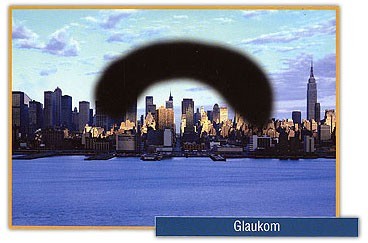Glaucoma is a silent killer of vision. Untreated glaucoma may lead to complete blindness. It is possible to stop it if diagnosed on time and treated properly. Unfortunately, a lot of patients do not receive sufficient treatment or some patients receives unnecessary treatment.

It is required to perform an OCT (optical coherence tomograph) examination in order to determine proper treatment; your retina and optic nerve will be examined by means of a laser ray. At our Eye Clinics we have an excellent and proven Carl Zeiss Stratus OCT3 device. The OCT examination can help doctors make the right decision and find the best solution for your eyes.
Glaucoma is a complicated disease in which the damage to the optic nerve results in a loss of vision. There are several forms of glaucoma; the two most common forms are primary open-angle glaucoma (POAG) and angle- closure glaucoma (ACG).
There are typically no early warning signs or symptoms of open-angle glaucoma. It develops slowly and sometimes without noticeable sight loss for many years. Most people who have open-angle glaucoma feel fine and do not notice a change in their vision at first because the initial loss of vision is off side or peripheral vision, and the visual acuity or sharpness of vision is maintained until late in the disease. By the time a patient is aware of vision loss, the disease is usually quite advanced. Vision loss from glaucoma is not reversible with treatment, even with surgery.
Because open-angle glaucoma has few warning signs or symptoms before damage occurrs, it is important to see a doctor for regular eye examinations. If glaucoma is detected during an eye exam, your eye doctor can prescribe a preventative treatment to help protect your vision.
In open-angle glaucoma, the angle in your eye where the iris meets the cornea is as wide and open as it should be, but the eye's drainage canals become clogged over time, causing an increase in internal eye pressure and subsequent damage to the optic nerve. It is the most common type of glaucoma, affecting about four million Americans, many of whom do not know they have the disease.You are at increased risk of glaucoma if your parents or siblings have the disease, if you are African-American or Latino, and possibly if you are diabetic or have cardiovascular disease. The risk of glaucoma also increases with age.
* Hazy or blurred vision
* The appearance of rainbow-colored circles around bright lights
* Severe eye and head pain
* Nausea or vomiting (accompanying severe eye pain)
* Sudden sight loss
Angle-closure glaucoma is caused by blocked drainage canals in the eye, resulting in a sudden rise in intraocular pressure. This is a much more rare form of glaucoma, which develops very quickly and demands immediate medical attention.
In contrast with open-angle glaucoma, symptoms of acute angle-closure glaucoma are very noticeable and damage occurs quickly. If you experience any of these symptoms, seek immediate care from an ophthalmologist.
If you are diagnosed with glaucoma, it is important to set a regular schedule of examinations with your eye doctor to monitor your condition and make sure that your prescribed treatment is effectively maintaining a safe eye pressure. It is required to perform an OCT (optical coherence tomograph) examination in order to determine proper treatment.
